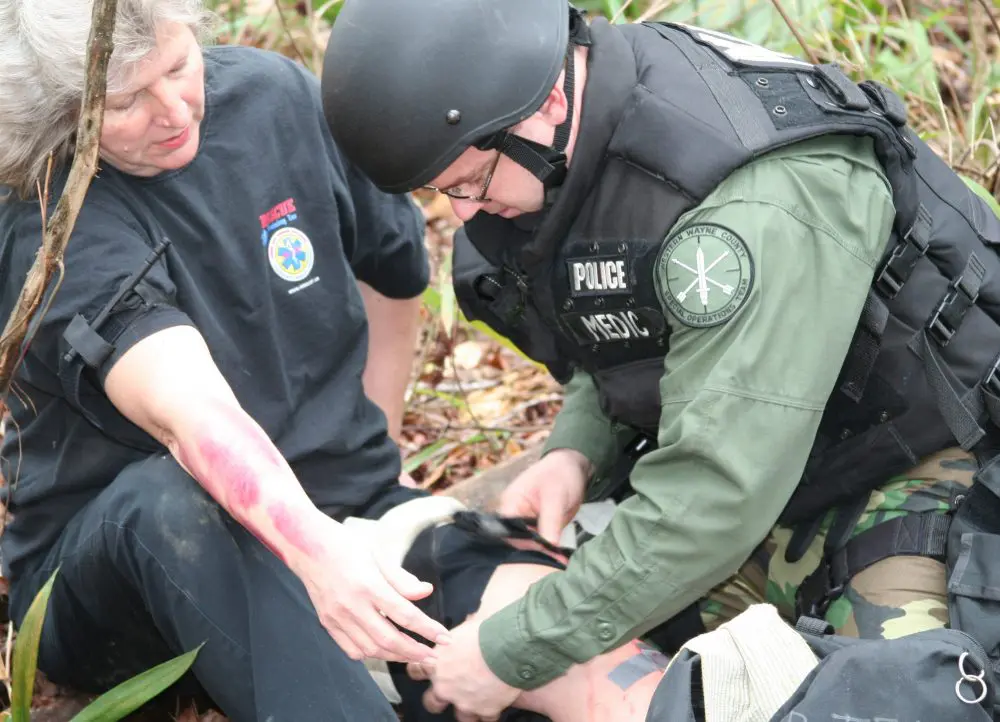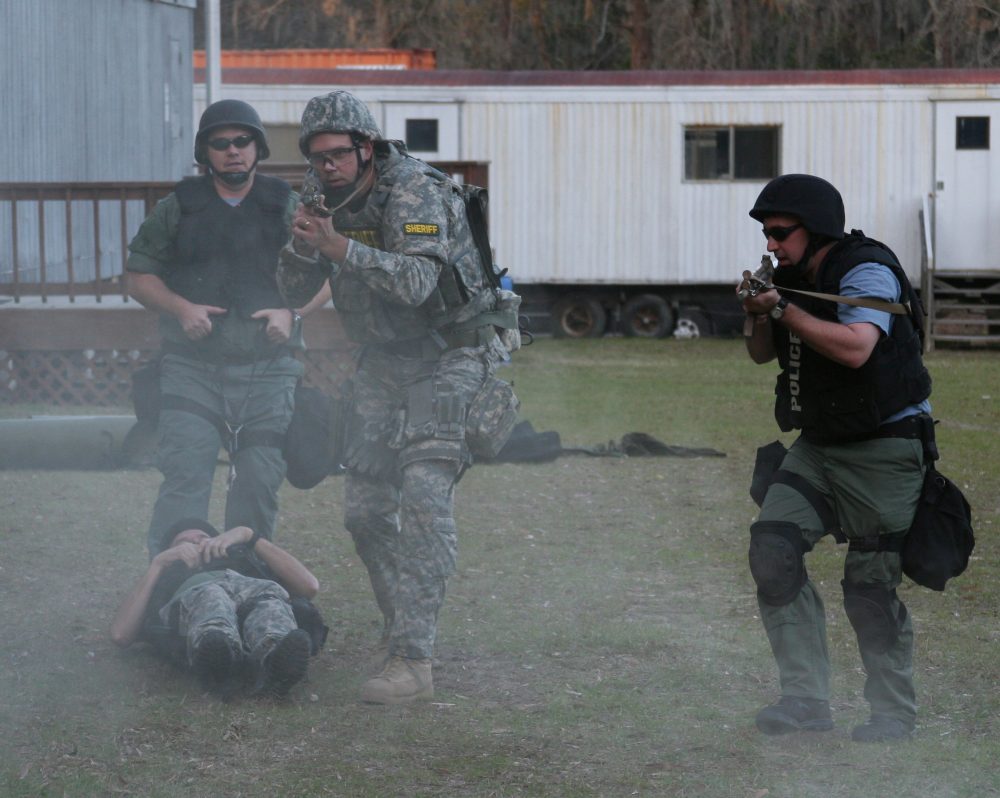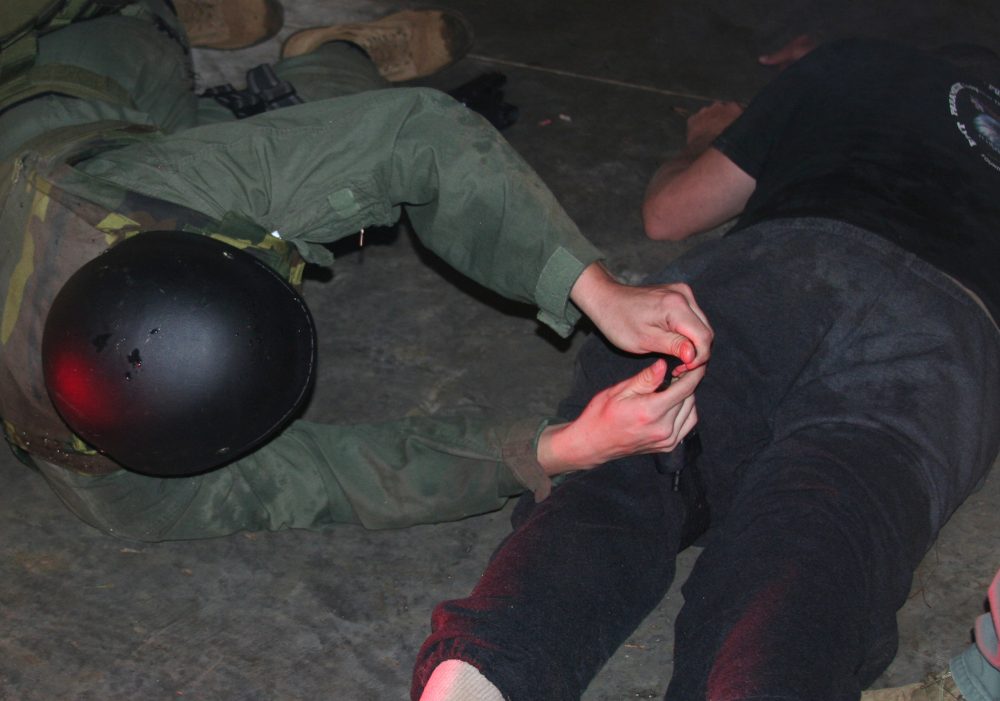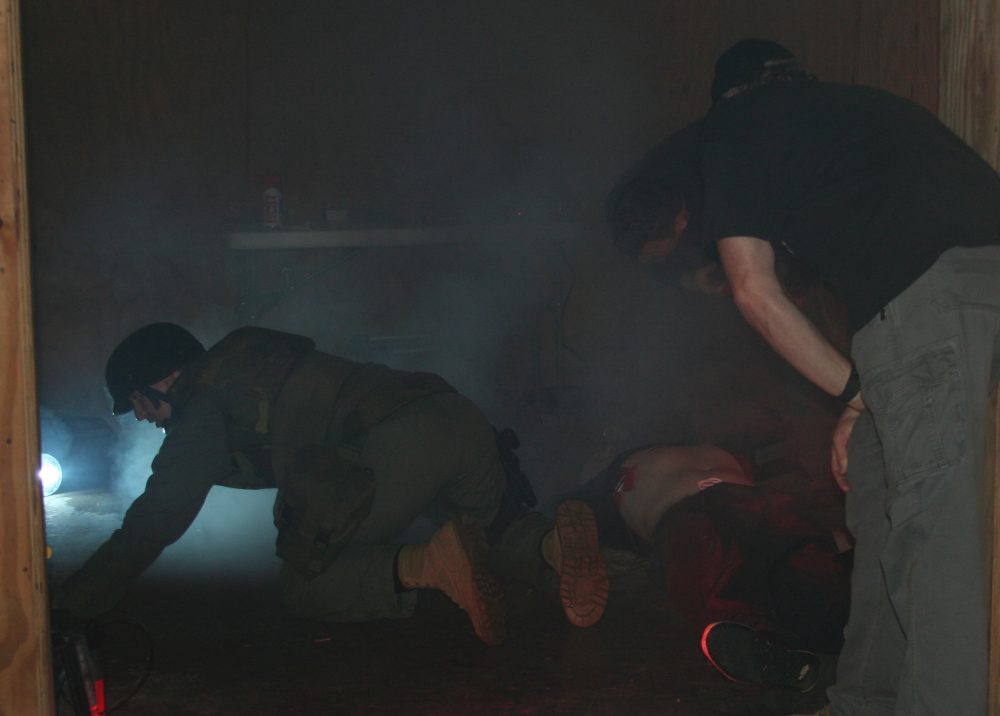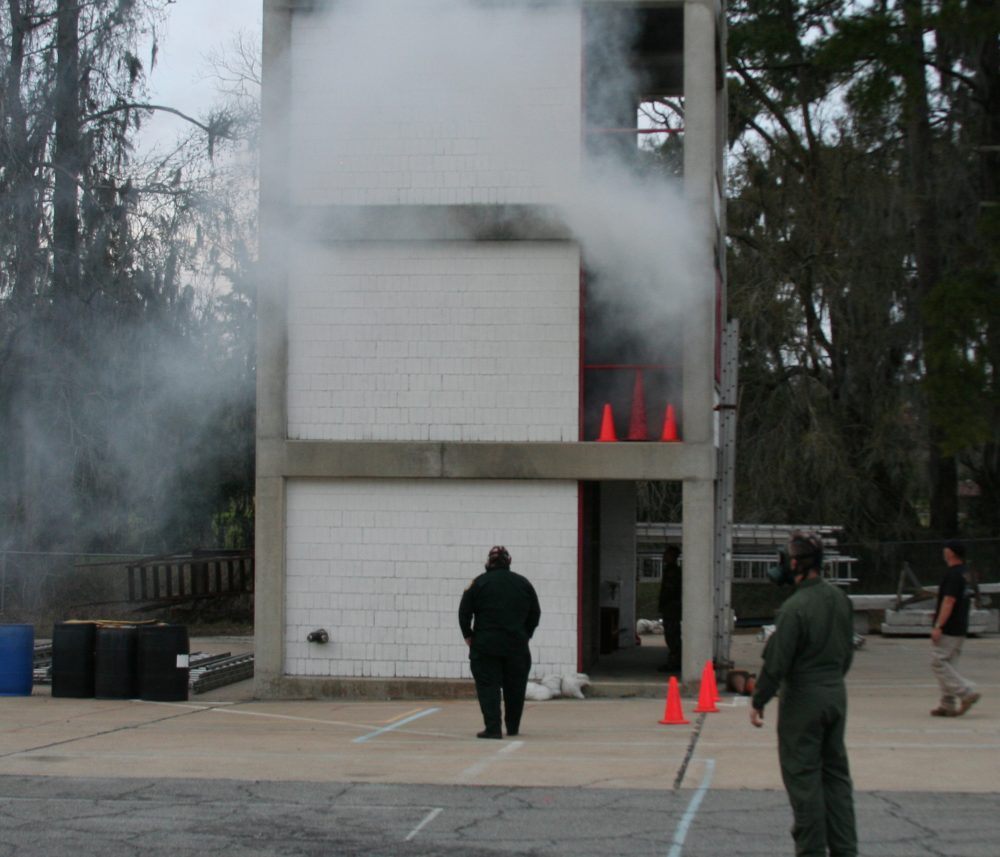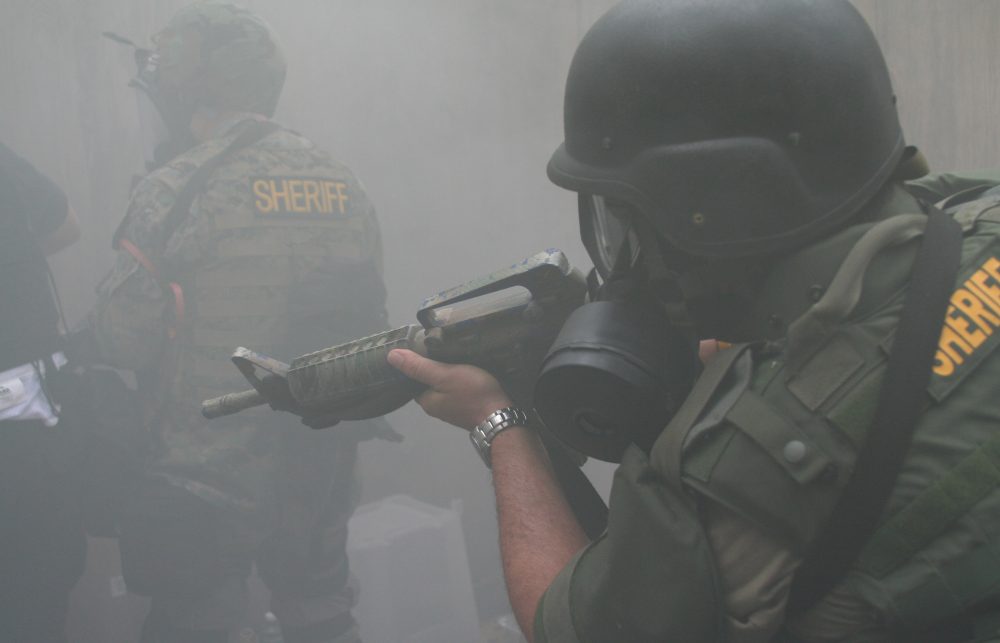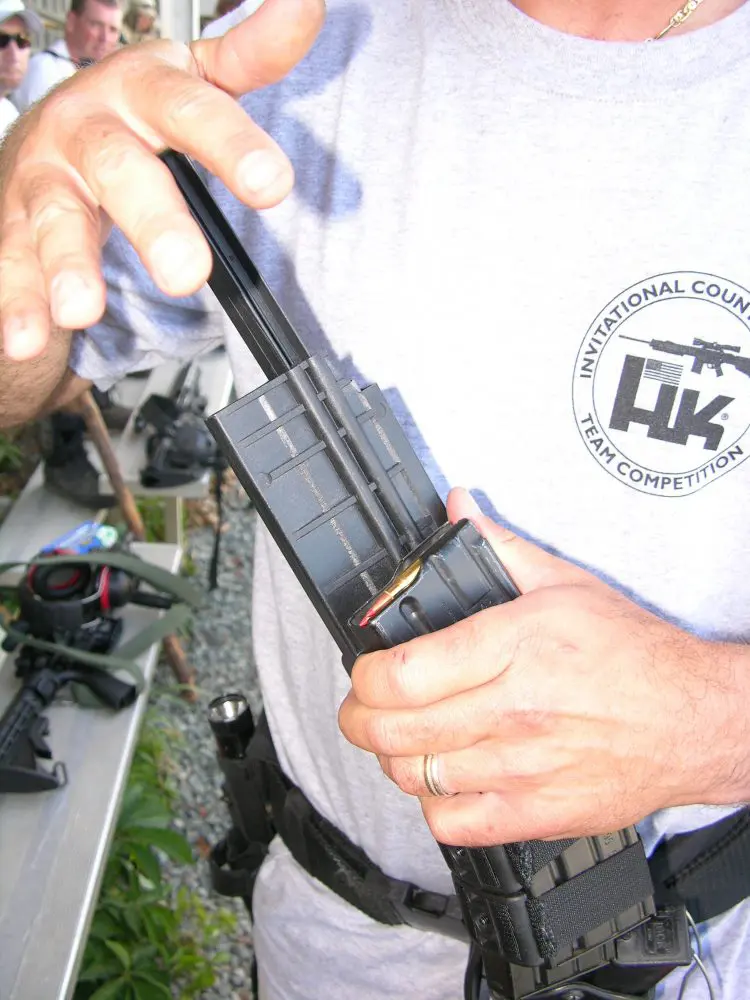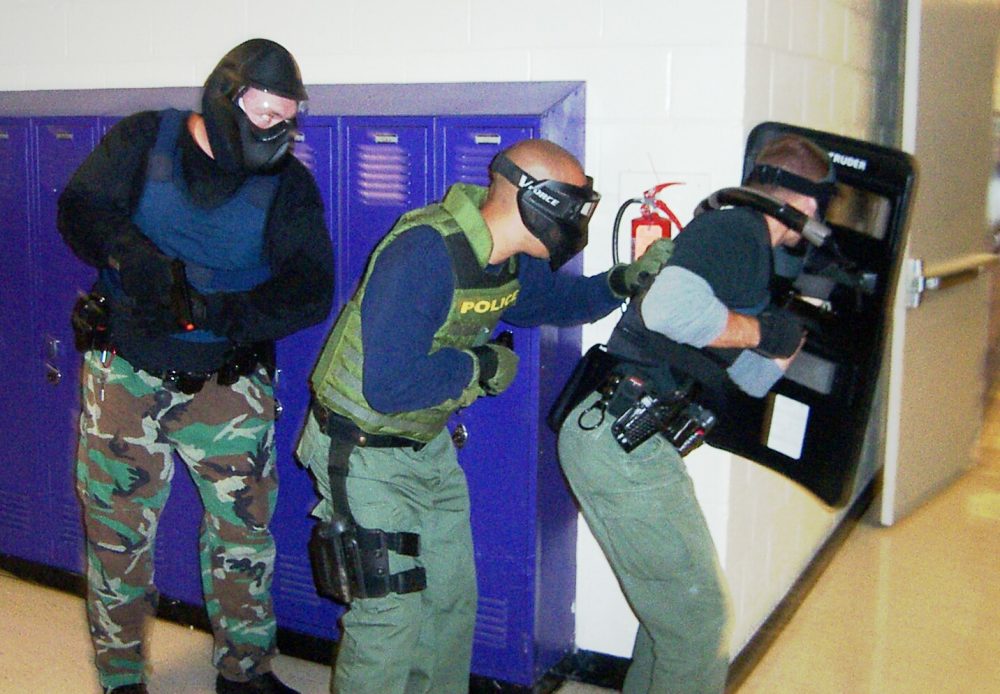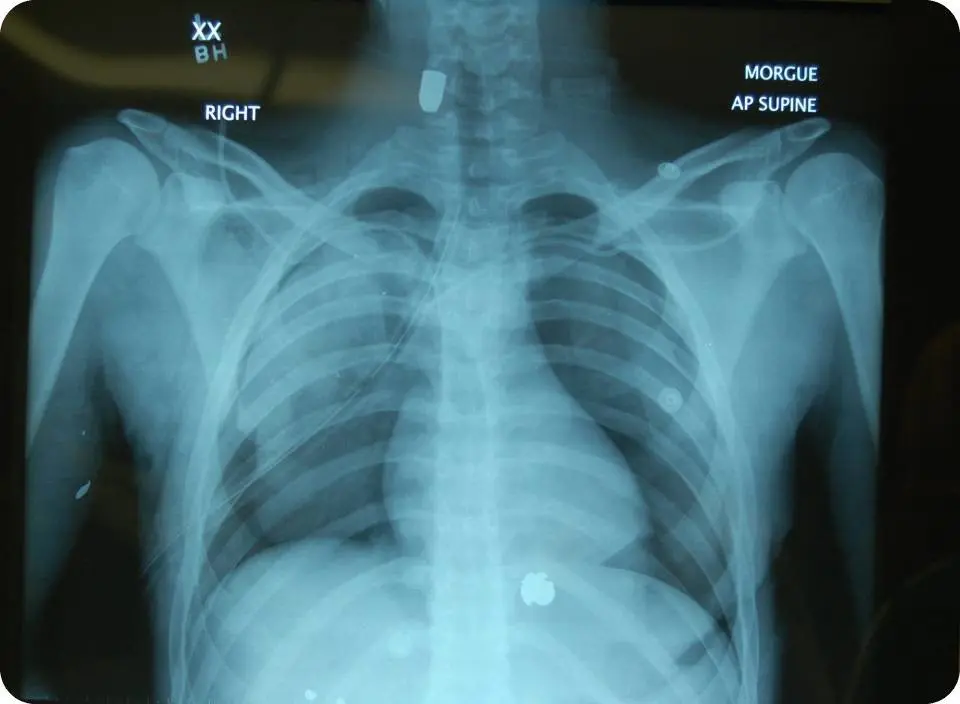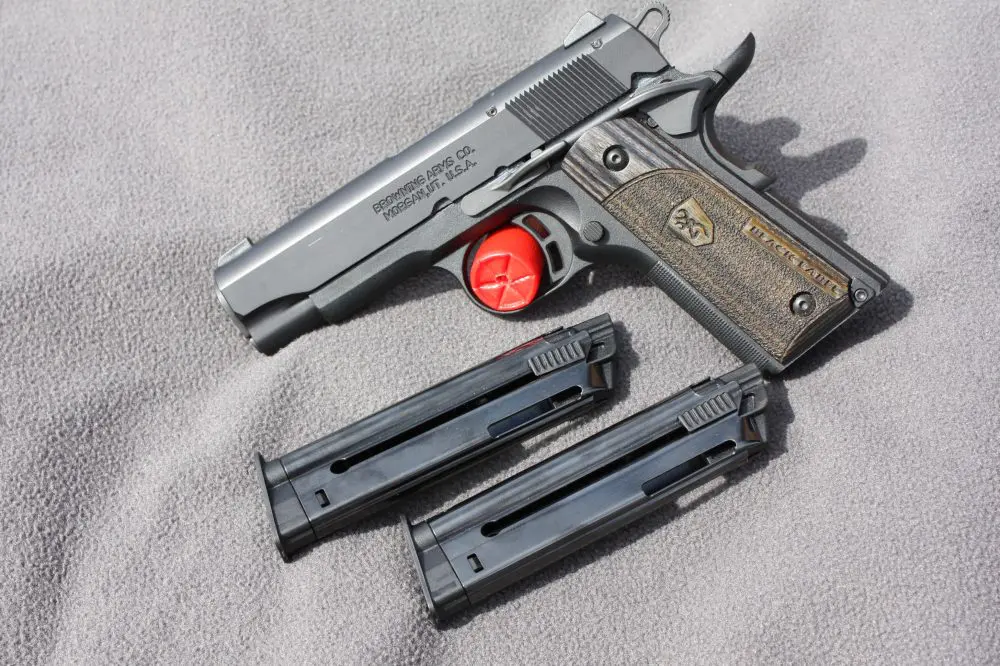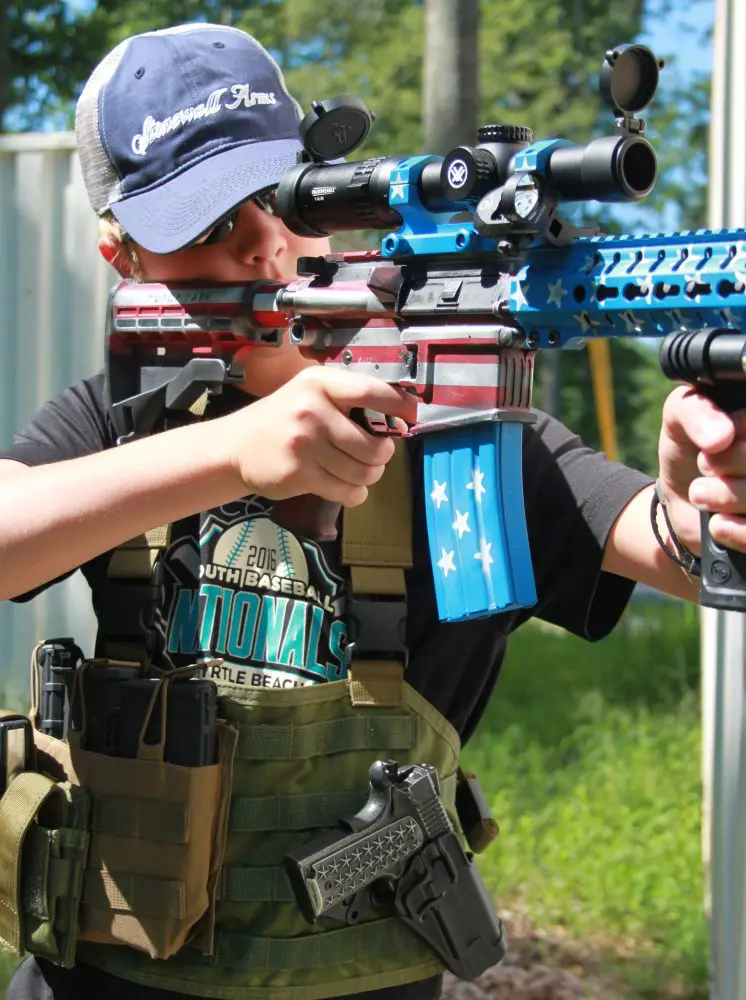Student applies tourniquet to wounded civilian’s leg during final exercise.
“Medic Up!” The dreaded call comes over the sound of explosions and gunfire. I hurry through a smoky room, headed in the direction from which the call came. As I step through the doorway, a hand seizes the back of my collar, thrusting me to the floor.
“They’re shooting through here!” an operator yells. “Low crawl across!”
I struggle across the muddy floor toward the still form I can see through the smoke and flashing light. The man remains motionless, and as I approach from the direction of his feet, fluid strikes me in the face. “Arterial bleed” flashes through my head. I clamp one gloved hand over the site, pulling a Combat Application Tourniquet out of my vest with the other. I’m a highly trained professional—I can fix this.
“What are you doing?” A voice booms from my left. Through the smoke and strobe lights I can see the larger-than-life form of our lead instructor, yelling at me through the boom mike hanging off his right ear. I continue trying to apply the tourniquet. “You’re a TACTICAL MEDIC,” he yells, drawing closer. “What are you doing?” I’ve got the tourniquet over the patient’s leg and begin to draw traction. “TACTICAL,” he yells even more loudly, “TACTICAL MEDIC!” Suddenly it dawns on me. I’m less than 30 seconds into the training evolution and I’ve already screwed up. My 12 years of EMS experience have betrayed me, drawing me in the wrong direction.
Members of EMT-T Class 33 practice officer extraction on second day of class.
Welcome to the Sensory Overload Lab, Day Two, at Rescue Training Inc.’s (RTI) EMT-Tactical medic program. After 12 years in both ground and air EMS, I was looking for something different. Drawn by RTI’s reputation, I am in Savannah, Georgia, in RTI’s EMT-T Class Number 33. When the Federal Counter Narcotics and Tactical Operational Medical Support (CONTOMS) Tactical Medic training program lost funding and came to a temporary halt, Dave Hall started an EMT-T program based on both CONTOMS and Tactical Combat Casualty Care (TCCC) standards to fill the gap. His company, Rescue Training Inc., holds numerous courses annually for law enforcement as well as various armed services groups readying for deployment overseas, including the 10th Special Forces Group and 1/75th Ranger Battalion. His instructor cadre is largely ex-military, nearly all with Special Operations and extensive combat experience. The instructor now correcting me in the Stress Lab has a background of 20 years in Special Forces and numerous combat deployments.
In Sensory Overload Lab, student places Combat Application Tourniquet on a leg to stop arterial bleeding.
“Look at me,” the instructor bellows through his loudspeaker. “Look in my eyes!” I stop what I’m doing and look up from my prone position beside the “patient.”
“Check the hands, check the hands, check the hands!” He recites a mantra we’ve been told endlessly, but that I’ve already forgotten. “This is a real life lesson you ought to have learned by now!” Should this downed operator suddenly wake up, with his last memory of being shot, and find me over his downed body, he is likely to shoot me out of reflex. Before anything else is done, I must find and secure his weapon.
I slide across the floor toward the patient’s head, feeling along both arms as I go. Through the dense smoke and strobe flashes I see a pistol in his right hand, tucked behind his head. I remove the gun and secure it in my vest. Now onto stopping his bleeding, securing an open airway and checking for other injuries.
Once my evolution is complete, I stay in the room to help “apply pressure” to my six other teammates. This session reveals weaknesses we didn’t know we had, and helps reinforce treatment modalities in a stressful environment.
Through the smoke and strobe lights, instructors “encourage” student during Sensory Overload Lab.
The class has drawn 29 students together from many backgrounds and two countries for this five-day class. There are the curious, such as myself, officers assigned as the medic on their local SWAT team, medics just getting onto teams, a SWAT medic from Canada, U.S. Army Rangers, Navy Corpsmen, a Federal Air Marshal, and an EMT from the Federal Bureau of Prisons.
On Day One we are assigned to teams, dividing us into groups with similar backgrounds, which allows the instructor cadre to tailor training to each group’s specific needs. We sit through lectures on the basics of tactical movement, officer down retrieval and tactical assessments. After lunch we move to the local fire training ground and utilize the area to practice tactical movement, assessment, suspect control and officer extraction. Everything on Day One is in slow motion, allowing us to get the feel of what we need to be doing. After three hours of hands-on training, we return to the classroom for lectures on weather-related injuries and a surprisingly interesting and thorough lecture on Hostage Psychology.
Day Two begins with lectures and hands-on stations involving airway management and threat assessment, among many other topics. After a supper break, we practice placing the life-saving tourniquets under a stopwatch, ending with team relay races for the title of fastest team. (I don’t recall who won, but it wasn’t my team.)
CS gas flows from fire tower in a thick cloud during CS Lab.
Now, at 1830 hours we travel to the local military base to use the Ranger Shoot House grounds for our night evolutions, including the Sensory Overload Lab. We are out until midnight, learning how to stalk subjects quietly in the woods, assess and treat a patient in complete darkness, extract multiple patients in a high-threat environment, and of course the Sensory Overload Lab.
Day Three dawns all too early, as we wake up in the classroom to lectures on fluid balance and resuscitation. Then it’s off to the county pool, where we spend four hours in the water (in full uniform) learning to do rescues, immobilize a spine while in the water, and make flotation devices out of our clothing. Mercifully this day ends early, and we gladly retire to our hotel rooms to sleep.
Day Four begins with a look at non-military operations in Iraq, delivered by a former Ranger Medic just back from two years contracting with a PSD (Personal Security Detail) team. This is followed by several hours of lectures and hands-on practice in basic suturing techniques. After lunch we’re back outside to practice remote assessment and treatment of an officer down whom we are unable to rescue or reach, as well as labs on various medical procedures.
The evening of Day Four holds the evolution everyone has been dreading: the CS Gas Lab. Rescue Training Inc. prides itself on providing one of the most intense CS gas experiences available. Suffice to say, when my hand is on the door frame, and I’m unable to see the door (with my mask still on), it’s a remarkably thick cloud of vapor. This serves to emphasize to us that no matter how dense the gas, we are still able to function as needed. After sufficient decontamination, we’re off to the hotels, to resurrect the residual gas in the shower.
“Delta” Team prepares to make entry on clandestine meth lab during final exercise.
Day Five begins with a comprehensive written exam, followed by a briefing on the final training exercise. After lunch we again meet at the Ranger Shoot House and undergo a series of evaluation drills, from triage and treatment in a casualty collection point, to the takedown of a remote meth lab complete with booby traps and armed suspects. Finally, we’re back in the classroom for graduation and dismissal.
This class served to drive home several points in particular for me. My background is 12 years in EMS, seven years as a medic on a flight team, and instructor qualifications in just about everything EMS-related. I was the 32nd Certified Flight Paramedic in the world, am certified in Adult, Pediatric and Neonatal Critical Care Transport, and hold a half-dozen other high-speed, low-drag qualifications. I thought this class would teach me a few new techniques, but nothing more. Trauma care is trauma care, right? Wrong!
Our nation’s recent experiences in Iraq and Afghanistan have provided us with solid, evidence-based footing in treating battlefield injuries. Not surprisingly, this vital information has not yet filtered through the layers of bureaucracy into standard EMS training. The proven life-saving techniques used by combat and tactical medics are not the same front-line techniques your average street medic is trained to immediately apply. If your team does not have tactically trained medics, or relies on local EMS for medical support, you might want to rethink this stance.
The most recent revision of the Military Special Operation Forces TCCC states that the top preventable killers of operators on the battlefield are airway obstruction, tension pneumothorax (a trapping of air in the chest that crushes the lungs and heart), and bleeding to death from massive extremity hemorrhage. All three of these are treatable, but all three can be fatal if not corrected in the first few minutes. Without trained, properly certified medics who are physically present with your team, you are needlessly putting your officers at risk. In particular, the #1 preventable cause of death during combat (60%) is from extremity hemorrhage. It is treatable by someone trained in the immediate use of a combat tourniquet and skilled to apply it within seconds. You can bleed to death from a severed or punctured femoral artery in two to four minutes. I had never even seen this particular device prior to this class, much less been trained in its proper use. Take it from a 12-year medic—the people providing care to your team need to be appropriately trained to do so.
A month ago I would have sworn to you that I was completely competent and confident in providing care to your SWAT team. I was wrong. To simply rely on a stand-by ambulance or tactically untrained provider in this day and age borders on negligence, in my opinion. As a medic, are you doing all you can for our brothers and sisters in the tactical community?
SOURCE:
Rescue Training Inc.
Dept. S.W.A.T.
P.O. Box 3853
Savannah, GA 31414
(877) 692-8911
www.emtt.org
